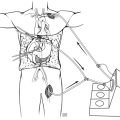Cannabis is a fascinating plant, with its key components being the flowers, leaves, and stems. However, the trichomes, tiny glands found on the flowers, are what produce cannabinoids and terpenes—the chemical compounds responsible for its therapeutic effects.
Medical cannabis, like that provided to UK patients by Releaf medical cannabis, relies on these components to treat various conditions effectively.
Each cannabis strain has a unique composition of cannabinoids and terpenes, which determines its effects. Sativa strains are generally energising, making them ideal for daytime use, while Indica strains tend to provide relaxation and pain relief. The anatomy of these strains plays a crucial role in their medical applications. You can explore this further by reading Releaf’s Sativa vs Indica guide.
The physical structure of cannabis also affects how it is grown and processed. Cultivators pay close attention to the anatomy of the plant to optimise trichome production, ensuring high-quality medical cannabis. This attention to detail is essential for providing patients with consistent and effective treatments tailored to their specific needs.
How do cannabinoids work in the body?
Cannabinoids interact with the body through the endocannabinoid system (ECS), a regulatory system that helps maintain balance in various bodily functions. The ECS consists of receptors, enzymes, and endocannabinoids that are naturally produced by the body. When cannabinoids from cannabis are introduced, they bind to these receptors, primarily CB1 and CB2 receptors, which are found in the brain and immune system, respectively.
THC primarily binds to CB1 receptors in the brain, influencing mood, memory, and perception, which explains its psychoactive effects. This binding triggers a range of responses, including pain relief, appetite stimulation, and mood elevation. On the other hand, CBD does not directly bind to CB1 or CB2 receptors but influences them in other ways, such as reducing inflammation and anxiety without causing the “high” associated with THC.
The ECS is a complex system, and each person’s body reacts differently to cannabinoids. This is why some people may find relief from anxiety, pain, or insomnia using THC or CBD, while others might require different dosages or combinations of these compounds to achieve the desired effects. The flexibility of cannabinoids allows for a more tailored approach to treatment, particularly in medical cannabis use.
What is the difference between cannabinoids and terpenes?
Cannabinoids and terpenes are both essential components of cannabis, but they serve different functions. Cannabinoids, like THC and CBD, directly affect the body by interacting with the ECS to produce a variety of therapeutic effects. These can range from pain relief and relaxation to appetite stimulation and reducing inflammation. The potency and effect of a strain depend largely on its cannabinoid profile.
Terpenes, while primarily known for their role in giving cannabis its aroma, also contribute to the overall effects of the plant. For example, the terpene limonene, which gives cannabis a citrus scent, is known to have anti-anxiety and mood-lifting properties. Another terpene, myrcene, which has an earthy aroma, is believed to promote relaxation and enhance the effects of THC. Together, terpenes and cannabinoids create the “entourage effect,” where their combined influence produces a more balanced and effective experience.
Understanding both cannabinoids and terpenes is crucial for medical cannabis users who want to find the best strain for their needs. By knowing which cannabinoids and terpenes are present in a strain, users can make more informed decisions about which type of cannabis will provide the most relief for their specific symptoms.
What is the current state of medical cannabis in the UK?
The landscape of medical cannabis in the UK is still evolving. In 2018, the UK made it legal to prescribe cannabis-based medicines, but access through the NHS remains very limited.
Currently, the NHS only prescribes cannabis for a narrow range of conditions, including severe epilepsy, chemotherapy-induced nausea, and multiple sclerosis. For many patients seeking relief for conditions like anxiety, chronic pain, or insomnia, getting an NHS prescription remains challenging.
Private clinics have filled the gap where NHS access is limited, offering more flexible and faster access to medical cannabis. These clinics are able to prescribe cannabis for a broader range of conditions, including mental health disorders and chronic pain. As awareness of the benefits of medical cannabis grows, more patients are turning to private options to explore cannabis treatments that are otherwise unavailable through public healthcare.
With the rise of private medical cannabis clinics in the UK, patients now have a choice between long NHS waiting times and more immediate access through private services. While private options can be more costly, the personalised care and wider treatment options often make them a more appealing choice for those who are struggling with chronic conditions and need faster relief.
How does Releaf compare to NHS prescriptions?
When it comes to accessing medical cannabis, Releaf offers a much more flexible and comprehensive service compared to the NHS.
While the NHS restricts cannabis prescriptions to only a few severe conditions, Releaf provides access to cannabis for a broader range of health issues. Whether you’re dealing with anxiety, PTSD, chronic pain, or insomnia, Releaf offers personalised treatment plans tailored to your specific needs.
The process of obtaining a prescription through the NHS can be slow, with long waiting times and limited access. In contrast, Releaf offers fast consultations and ongoing support, ensuring that patients receive the care they need without unnecessary delays. Releaf’s patient-first approach allows for more consistent follow-ups and adjustments to treatment, making it a more accessible and efficient option.
For those looking to explore medical cannabis for conditions not covered by the NHS, Releaf provides a trusted and reliable alternative. With its team of specialists, Releaf ensures that patients receive high-quality care and effective cannabis treatments, without the bureaucratic hurdles often associated with NHS prescriptions.
Why should you choose Releaf for medical cannabis?
Releaf stands out in the UK’s medical cannabis landscape for its commitment to personalised care. Every patient receives a treatment plan tailored to their symptoms and medical history, ensuring the most effective use of medical cannabis. Whether you’re new to cannabis or have tried it before, Releaf’s team will work with you to find the right balance and dosage for your needs.
What sets Releaf apart is the ongoing support they provide. Patients aren’t left to figure things out on their own—Releaf offers continuous guidance, monitoring your progress, and making adjustments to your treatment plan as needed. This ensures that you’re always receiving the best possible care and that your cannabis prescription is working effectively for your condition.
Releaf’s reputation for high-quality service, combined with their expertise in medical cannabis, makes them a top choice for patients in the UK. For anyone considering medical cannabis as part of their treatment, Releaf offers a trusted and reliable service with a focus on patient well-being.




